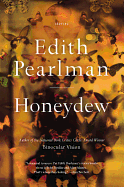
| Publisher: | Little, Brown | |
| Genre: | Fiction, Short Stories (single author) | |
| ISBN: | 9780316297226 | |
| Pub Date: | January 2015 | |
| Price: | $25 |
| Starred | Fiction |
by Edith Pearlman
Edith Pearlman's stories have often been compared with John Updike's, and the comparison is apt. Born in 1936, Pearlman has published four collections; Binocular Vision (2011) won the National Book Critics Circle Award. For years, Pearlman has populated her fictional town, Godolphin, a "leafy wedge of Boston," with great characters. She revisits it often, as in "Honeydew," included in The Best American Short Stories 2012. Besides Coccidae droppings (also known as honeydew), it's about a headmistress at a private girl's school, Caldicott Academy, who must confront her pregnancy by the married father of one of her students. In "Blessed Harry," Mr. Flaxbaum, who teaches Latin and coaches the chess club at Caldicott, has been invited to give a lecture in England--or, unknown to Mr. Flaxbaum, maybe he hasn't. And Rennie, who runs the Forget Me Not antique shop in Godolphin, shows up in two stories.
Rereading each of these 20 intricate gems reveals their meticulous structure. Every story is brief, no longer than 20 pages or so. Pearlman says she likes "solitaries, oddities, charlatans, and children. My characters are secretive." Whether carefully dissecting her characters' feelings or observing tiny details, Pearlman reveals her acute eye time and time again: one character's sadness is "always wedged under her breast like a doorstop," and a man has "teeth like cubes of cheddar."
The collection has a distinct, Winesburg, Ohio feel to it. Like Sherwood Anderson's classic, Honeydew is a portrait of America, only this time it's the East Coast in the 21st century, as painted by one of our finest literary artists. --Tom Lavoie, former publisher
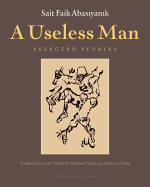
| Publisher: | Archipelago Books | |
| Genre: | Fiction, Short Stories (single author), Literary | |
| ISBN: | 9780914671077 | |
| Pub Date: | January 2015 | |
| Price: | $18 |
| Starred | Fiction |
by Sait Faik Abasiyanik, trans. by Maureen Freely, Alexander Dawe
Almost 60 years after the author's death, the short stories of Turkish literary treasure Sait Faik Abasiyanik (who published as Sait Faik) have been superbly translated into natural, everyday English in A Useless Man: Selected Stories. In this sampler of 37 pieces from his 12 volumes of short works, Sait Faik trustingly confides his very personal tales to the reader in small, intimate constructions that can span an entire lifetime or capture a fleeting moment. His minimalist verbal delights--stream-of-consciousness monologues, elegiac prose-poems, love confessions, melancholy reflections--are evocative and nostalgic without ever being saccharine.
A man who never leaves the four streets of his neighborhood and hasn't bathed in seven years takes a fearful trip to the city in "A Useless Man." In "I Just Don't Know Why I Keep Doing These Things," an old hunchback loses his amber prayer beads in a coffeehouse and is convinced the narrator has stolen them. A man whom strangers always ask for help is approached by a newly employed illiterate man to read aloud lab results in "Four Pluses."
Often Sait Faik comments on his stories while writing them, and midway through a telling, he is not above considering a different topic for the story altogether, only to abandon the alternative and go back to his original plot. Elliptical and unexpected, sometimes lyrical, sometimes earthy, these loving tributes to the unnoticed loners on the margins of life reveal the world through Sait Faik's eyes in all its brutality and loneliness and beauty. --Nick DiMartino, Nick's Picks, University Book Store, Seattle, Wash.

| Publisher: | New American Library | |
| Genre: | Fiction, Contemporary Women, Family Life | |
| ISBN: | 9780451472137 | |
| Pub Date: | January 2015 | |
| Price: | $15 |
| Fiction |
by Sonja Yoerg
Geneva Novak is a successful veterinarian living in San Francisco with her husband and two rebellious teenagers. When she receives a phone call from her brother in Los Angeles notifying her that their mother, Helen, has been in a serious car accident, Geneva's world is upended. The urging of her always-optimistic husband--who comes from a loving yet often overbearing family very different from her own--convinces Geneva that taking in the convalescing Helen might help repair their broken and contentious mother-daughter relationship. Grudgingly, Geneva invites a reluctant Helen into their home in the hope that Helen might finally address questions that have remained unanswered for decades--questions about Geneva's long-deceased father, Geneva's sister who has exiled herself to Africa and Helen's chronic alcoholism. Unfortunately, Helen's arrival only heralds new, unexpected problems, and it seems that things might get worse before they get better.
House Broken, Sonja Yoerg's complex, sensitively crafted debut novel, emerges as a multigenerational saga largely narrated by Geneva, who often seems more capable of caring for--and more empathic toward--the animals in her life than people. The viewpoints of Helen and Ella, Geneva's 16-year-old daughter, help flesh out the story. The distinct, authentic voices of these women from three generations probe beneath the surface of their own personal realities, while also shining a light onto dark secrets--past and present--that reveal the flaws and often-irreconcilable differences within a family. --Kathleen Gerard, blogger at Reading Between the Lines
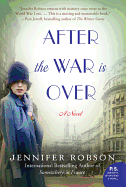
| Publisher: | Morrow | |
| Genre: | General, Fiction, Sagas, Historical, Literary | |
| ISBN: | 9780062334633 | |
| Pub Date: | January 2015 | |
| Price: | $14.99 |
| Fiction |
by Jennifer Robson
With her debut novel, Somewhere in France, Jennifer Robson painted a vivid portrait of life in the trenches and battlefields of World War I. In After the War Is Over, Robson turns her attention to the societal ills of postwar England and one young woman determined to speak out on behalf of the voiceless.
Charlotte Brown--vicar's daughter, Oxford graduate--found satisfaction in her work as a nurse during the war years. As she returns to her old job at a relief agency in Liverpool, she realizes the country's wounds are only beginning to heal. When her impassioned letter to a newspaper editor yields regular work as a columnist, Charlotte finds herself penning fiery appeals, explaining the plight of the families she tries to help. Meanwhile, she can't quite forget the man who captured her heart years ago: her best friend's brother, Edward, a kind, aristocratic man deeply damaged in mind and body by the war. As Charlotte struggles to reconcile her love for Edward with her deep convictions about social injustice, she must confront her own class prejudices and her fears about being loved.
Robson's prose brims with authentic period detail and characters, as in the diverse group of women at Charlotte's boardinghouse or the delights of the seaside at Blackpool on a rare day out. At once sweeping and intimate, Charlotte's story is both a sensitive depiction of postwar Britain and the story of a woman trying to find her voice on and off the page. --Katie Noah Gibson, blogger at Cakes, Tea and Dreams
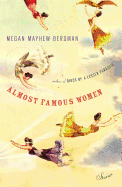
| Publisher: | Scribner | |
| Genre: | General, Fiction, Historical, Short Stories (single author), Literary | |
| ISBN: | 9781476786568 | |
| Pub Date: | January 2015 | |
| Price: | $25 |
| Fiction |
by Megan Mayhew Bergman
In these 13 stories of Almost Famous Women, Megan Mayhew Bergman (Birds of a Lesser Paradise) saves historical women from near-obsolescence through imaginative tales inspired by their acts of derring-do--or, in some cases, inspired by their mere existence.
Historians have noted Lord Byron's illegitimate daughter, who died at age six; Bergman fleshes out "The Autobiography of Allegra Byron" through a nun who cared for the young girl after she was banished to the convent at age three. The unnamed narrator and the child share heartbreaking rejection and find a glimmer of joy in each other. Thrill-seeking women abound in the collection, chock-full of bravery, defiance and creativity. "Hazel Eaton and the Wall of Death" focuses on a motorcycle racer raised in a Maine lighthouse. Joe Carstairs zips around the Bahamas in her speedboat in "The Siege at Whale Cay." A woman who loved Dolly Wilde despairs when she finds love letters from Dolly to Joe--a clever callback--in "Who Killed Dolly Wilde?"
Defying racism, Tiny Davis--leader of an integrated all-woman traveling jazz band during the Jim Crow era--relies on Ruby, the narrator of "Hell Diving Women," though she doesn't return Ruby's unconditional love. Perhaps the most bizarre story is "The Pretty, Grown-Together Children," narrated by Daisy Hilton, who used to perform with her conjoined twin, Violet. Only one story departs from history: a futuristic spin on the Shirley Jackson classic, titled "Lottery, Redux."
Vintage photographs of the heroines and author's notes add to the charm of these stranger-than-fiction (but still fictionalized) stories of women salvaged from history's footnotes. --Cheryl Krocker McKeon, manager, Book Passage, San Francisco
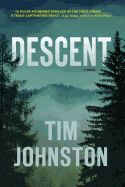
| Publisher: | Algonquin | |
| Genre: | Crime, Fiction, Thrillers | |
| ISBN: | 9781616203047 | |
| Pub Date: | January 2015 | |
| Price: | $25.95 |
| Mystery & Thriller |
by Tim Johnston
Sadly, the disappearance of a child is a semiregular event: the Amber Alert, the pictures on Laundromat bulletin boards, the months or years of diminishing attention. Often lost in the news is the story of the tears and prayers of the child's family. In Descent, Tim Johnston's first adult novel (after his prize-winning story collection Irish Girl), the focus is on Wisconsin's Courtland family after their 18-year-old track-star daughter, Caitlin, disappears during a run with her brother, Sean, while on a family vacation in the Colorado mountains.
In measured, occasionally lyrical prose, Johnston builds the narrative of Caitlin's abduction around the separate stories of her gradually disintegrating family. Her father, Grant, stays in Colorado to continue the search of "all the millions of true, godless places a person might be." Her mother, Angela, returns with Sean to Wisconsin to try for some normalcy in their lives--she teaching and he back in high school. While Caitlin struggles to remain optimistic in the wilderness, Grant takes odd jobs at Colorado ranches as his hope for her return fades, Angela becomes unglued and suicidal and Sean takes the family's truck on an aimless, guilt-ridden road trip out West.
Each has weaknesses beyond the loss of Caitlin, and Johnston takes many digressions from the underlying uncertainty as to who took her, why, whether or not she'll return and what she'll find if she does. Descent is more than an abduction mystery. Sean and Grant have a taciturn conversation that plainly targets two overarching questions: "Do you think we'll ever feel normal again?" and "I don't know. What's normal?" --Bruce Jacobs, founding partner Watermark Books & Cafe, Wichita, Kan.
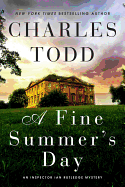
| Publisher: | Morrow | |
| Genre: | General, Police Procedural, Fiction, Mystery & Detective, Historical, Literary, International Mystery & Crime | |
| ISBN: | 9780062237125 | |
| Pub Date: | January 2015 | |
| Price: | $26.99 |
| Mystery & Thriller |
by Charles Todd
The mother-son writing team called Charles Todd (The Walnut Tree) has published a large collection of novels set during and after World War I. This time, Todd jumps back further in time for the 17th Ian Rutledge mystery, detailing a strange case for the Scotland Yard inspector--which he takes the summer the Great War begins.
The strange summer starts with an apparent hanging in the north of England, but soon Inspector Rutledge finds himself crisscrossing the entire country in search of a suspected serial killer--much to the annoyance of his new fiancée. The case tests Rutledge's wits to their limits and he must go against the orders of his superior officers in his attempts to catch a killer.
Longtime fans of the series will enjoy this look back at Rutledge's early years, though they may miss some of the later characters (most notably, Hamish MacLeod). For readers new to Todd's delightful charms, A Fine Summer's Day is a perfect introduction; it can easily work as a stand-alone novel. Just in time for the centennial anniversary of the beginning of the Great War, this irresistible mystery has a sad but gripping setting. The impending unease over the unfolding events in the Balkans and the view of many of the characters that "the war will be over by Christmas" is unbearably naive to the knowledgeable reader, and foreshadows the terrible impact that the war will have on Rutledge and the rest of England. --Jessica Howard, blogger at Quirky Bookworm
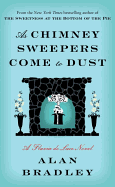
| Publisher: | Delacorte Press | |
| Genre: | Fiction, Mystery & Detective, Historical, Women Sleuths | |
| ISBN: | 9780345539939 | |
| Pub Date: | January 2015 | |
| Price: | $25 |
| Mystery & Thriller |
by Alan Bradley
In Alan Bradley's seventh novel, intrepid 11-year-old sleuth Flavia de Luce has been banished from her beloved Buckshaw Manor in bucolic England to Miss Bodycote's Female Academy in Toronto, her late mother's alma mater. Her gloom lifts when a desiccated corpse plunges from the chimney to her dorm room's hearth on her first night in Canada! It's a ready-made case for the precocious chemist.
At the end of the last novel in the series, The Dead in Their Vaulted Arches, Aunt Felicity hinted at Flavia's destiny to continue the family's cryptic Duty. Homesick and missing even her annoying sisters, plucky Flavia puts on a good show for her tight-lipped classmates and Headmistress Miss Fawlthorne, who has "the look of a pirate who had given up the sea for a career in education." The mysteries of the De Luce family (for example, why was Winston Churchill at her mother's funeral?) plus the secretive attitudes of her classmates put Flavia on guard. Not knowing whom she can trust, she performs--swooning, weeping, cajoling--in order to place herself in the best positions for sleuthing: "Feigning stupidity was one of my specialties." Investigating the corpse's identity on the sly is risky, and although Flavia's blood runs cold more than once, she perseveres.
Book seven is a rollicking read for anyone just meeting Flavia, but readers of previous installments will welcome her like an old friend, savoring references to the folks back home at Buckshaw--where, like Flavia, they'll hope to return. --Cheryl Krocker McKeon, manager, Book Passage, San Francisco

| Publisher: | Kyle Cathie | |
| Genre: | Regional & Ethnic, Health & Healing, General, Central American & South American, Cooking | |
| ISBN: | 9781909487185 | |
| Pub Date: | January 2015 | |
| Price: | $22.95 |
| Food & Wine |
by Angie Martinez, Angelo Sosa
Latin cuisine is known for its bold, spicy flavors--not necessarily its health benefits. But when radio and TV host Angie Martinez realized she could order brown rice at a Mexican restaurant, a light bulb clicked on. What if she could tweak classic Latin recipes to make them lighter and healthier, without sacrificing flavor? With the help of New York chef Angelo Sosa, Martinez set out to rework her favorite dishes and asked a handful of friends to contribute theirs. The result is Healthy Latin Eating, a cookbook bursting with bright, colorful photographs and mouthwatering recipes.
Sosa begins with a list of healthy cooking techniques and simple ingredient swaps: brown rice instead of white, Greek yogurt instead of sour cream. He and Martinez share dozens of lightened-up favorites from their childhoods: Dominican quipes (croquettes), crispy tostones (plantain chips), arroz con pollo (a classic chicken dish made with quinoa instead of rice). The salad chapter features fresh, colorful produce--no tweaks needed here--and the main dishes includes lighter versions of chiles rellenos, skirt steak tacos and savory seafood paella. The chapter on dips and salsas boasts four kinds of guacamole, and the cocktails and desserts suggest creative touches to finish off a meal (there's even a chocolate tamale recipe). Many of the dishes will feed a crowd, and there are plenty of vegetarian, vegan and gluten-free options.
Peppered with cooking tips and family stories, Healthy Latin Eating offers home cooks a fresh way to enjoy their favorite spicy dishes. ¡Olé! --Katie Noah Gibson, blogger at Cakes, Tea and Dreams
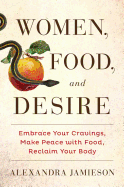
| Publisher: | Gallery Books | |
| Genre: | Health & Fitness, Spiritual, Psychology, Self-Help, Human Sexuality, Personal Growth, Motivational & Inspirational, Happiness, Healthy Living | |
| ISBN: | 9781476765044 | |
| Pub Date: | January 2015 | |
| Price: | $26 |
| Body, Mind & Spirit |
by Alexandra Jamieson
Functional nutritional coach Alexandra Jamieson hopes to offer reliable, knowledgeable and trustworthy support to help women satisfy many forms of hunger. To this end, she opens and ends Women, Food, and Desire: Embrace Your Cravings, Make Peace with Food, Reclaim Your Body with her essential questions for every woman: What do you want and how do you want to feel? Jamieson believes women must answer both questions honestly and then share this truth with others. To facilitate this assessment, Jamieson addresses self-care from many angles, including movement through yoga, Pilates and walking; massage and Emotional Freedom Techniques (EFT, a kind of meridian tapping); and meditation, visualization and conscious breathing.
While Jamieson extensively covers the "other F-Word" (food), she also explores additional cravings--"meaningful work, liberating play, satisfying sex, companionship, intellectual stimulation, and rest," believing we lose a quality of spirit when we overeat, under sleep and endure unfulfilling work, sex and relationships. She recommends breaking the cycle of craving by asking oneself what one really desires at that moment and then sitting in discomfort until the answer arises. This will help distinguish cravings, which she believes are deep messages from the soul, from superficial wants. Jamieson sees cravings as our greatest guide and explains how they differ from hunger, why women are most susceptible to them and how to create healthy habits out of them. Given her approach, every meal is an opportunity to ask what will lead to feeling good over time. --Kristen Galles from Book Club Classics
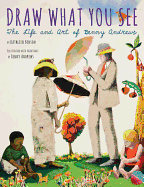
| Publisher: | Clarion | |
| Genre: | People & Places, United States/21st Century, Juvenile Nonfiction, Art, Prejudice & Racism, History, Biography & Autobiography, Social Issues, Painting, United States - African-American | |
| ISBN: | 9780544104877 | |
| Pub Date: | January 2015 | |
| Price: | $16.99 |
| Starred | Children's & Young Adult |
by Kathleen Benson, illust. by Benny Andrews
Kathleen Benson's (John Lewis in the Lead) picture-book biography introduces Benny Andrews (1930–2006), demonstrating how he lived his life as much as how he created his artwork.
Benson opens with Andrews's 2005 trip to New Orleans to work with children after Hurricane Katrina. "He showed them how to draw pictures of what they had seen, to use art to express their feelings about what they had been through," she writes, words to live by for Andrews himself, judging from the dozen compositions here. The author lets Andrews's oil-and-fabric collages carry his story and uses economical text to fill in the facts. "He drew hot suns and red clay and little wood-frame houses in the middle of cotton fields that stretched as far as he could see," she writes of his childhood in Plainview, Ga. A description of Benny's graduation from high school, his entry to college on a scholarship and his enlistment in the Air Force ("he knew there was a bigger world waiting for him") finds the perfect accompaniment in his The Promised Land (2004). A car, laden with luggage, departs a barren landscape and approaches flowering trees. The book illuminates the way Andrews's commitment to exposing on canvas the sorrows and joys of African American life mirrored his activism in the streets and his passion for teaching artists at community centers, schools and prisons. "He believed that art was for everyone," Benson writes.
Andrews's artwork and his story will inspire children to "draw what they see" and live out their dreams. --Jennifer M. Brown, children's editor, Shelf Awareness

| Publisher: | Dial | |
| Genre: | Social Issues, United States - Colonial & Revolutionary Periods, Art & Architecture, Juvenile Fiction, Humorous Stories, Historical, Manners & Etiquette | |
| ISBN: | 9780803730380 | |
| Pub Date: | January 2015 | |
| Price: | $16.99 |
| Children's & Young Adult |
by Lynn Cullen, illust. by Nancy Carpenter
Lynn Cullen (Moi and Marie Antoinette) delivers a playful mash-up of the "Rules of Civility and Decent Behavior in Company and Conversation" and a fictional relationship between George Washington and his portrait artist's family.
Nancy Carpenter (Lucky Ducklings) plants clues to the chaos to follow. Readers see Washington from the back, in full uniform and powdered white ponytail, as Gilbert Stuart paints his portrait. Three children peer through the window, precariously balanced on a cart. With the turn of the page, the children sail through the door, their dog pulls out Washington's hair ribbon, and their cat pounces on his shoulder. Washington departs by carriage as Charlotte, the artist's oldest child, pens a letter of apology. She also thanks him for the book he sent, Rules of Good Behavior for Boys and Girls. While a schoolboy, Washington copied down the 110 "Rules of Civility..." first recorded by Jesuits in 1595. Charlotte recites 10 of them in her letter (conflating Rules 97 & 98 into her #5: "Put not another bite into your Mouth until the first is Swallowed. Let not your Morsels be too big for the Jowls, nor talk with your mouth Full"). When Washington returns a week later, Charlotte's correspondence recounts his visit and demonstrates how well she and her brother followed "the Rules."
Readers will enjoy watching the president play straight man to the antics of the Stuart children. The siblings don't mean to be discourteous; they're simply rambunctious, which comes through in Charlotte's heartfelt letters and Carpenter's affectionate, boisterous pen-and-ink and acrylic illustrations. --Jennifer M. Brown, children's editor, Shelf Awareness
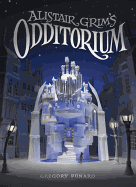
| Publisher: | Disney/Hyperion | |
| Genre: | General, Science & Technology, Fantasy & Magic, Action & Adventure, Juvenile Fiction, Historical | |
| ISBN: | 9781484700068 | |
| Pub Date: | January 2015 | |
| Price: | $16.99 |
| Children's & Young Adult |
by Gregory Funaro
Gregory Funaro's debut novel presents a winning magical adventure populated by fairies and sirens in a world where the "odd was the ordinary." Grubb, who narrates, is an erstwhile chimney sweep and "the boy who caused all the trouble."
Grubb is a foundling, beaten, starved and forced to work at a young age by his horrible foster father. He escapes by stowing away in Alistair Grim's carriage, and immediately finds himself in a world like no other. Grim's Odditorium brims with magical beings who emit an "eerie blue light" from their eyes. Samarai, servants, even a talking pocket watch named McClintock, are all powered by the mysterious blue animus that seems to exist only in the Odditorium. But then a bit of that animus escapes when McClintock hitches a ride in Grubb's coat and is stolen by a gang of young thieves. Suddenly, shadowy doom dogs go on the attack, followed by the fire-spitting Black Fairy and evil Prince Nightshade. Mr. Grim is forced to take the entire Odditorium and escape through a hole in the sky.
Pleasantly cryptic mysteries abound in Funaro's tale, the first in a planned series. Many of the characters have uncertain origins, and the author reveals the workings of the Odditorium slowly, as needed. Funaro ratchets up the tension when Grubb is captured and thrown into Prince Nightshade's dungeons. The young chimney sweep proves to be brave, honest and resourceful--and he may well be all that stands between Alistair Grim's Odditorium and doom. --Lynn Becker, host of Book Talk, the monthly online discussion of children's books for the Society of Children's Book Writers & Illustrators

| Publisher: | Knopf Books for Young Readers | |
| Genre: | Love & Romance, Death & Dying, Social Issues, Juvenile Fiction | |
| ISBN: | 9780385755887 | |
| Pub Date: | January 2015 | |
| Price: | $17.99 |
| Children's & Young Adult |
by Jennifer Niven
Jennifer Niven's (American Blonde; Ada Blackjack) first YA novel is the story of two teens whose dark paths join to become filled with light and humor. In the opening scene--one of the funniest in literature, for young people or adults--two teens from opposite sides of the social spectrum meet on the roof of their high school, where they've both come to contemplate jumping.
"Take it from me, the worst thing you can do is look down." These are 17-year-old Theodore Finch's first words to former cheerleader Violet Markey. Finch continues, "Come here often? Because this is kind of my spot and I don't remember seeing you here before." Although his friends call him Finch, he's more widely known as "Freak" since eighth grade--reinforced by his outlandish behavior. So everyone naturally assumes that Violet saved Finch from leaping to his death, rather than the reverse. To Violet's credit, she sees "Freak" in a new light after their shared experience, and becomes willing to be seen talking with him in the hallways. She even consents to be Finch's partner in a U.S. geography project called "Wander Indiana."
Niven constructs the project as not only a physical scavenger hunt of Indiana's star attractions but also a literal quest. In alternating chapters narrated by Violet and Finch, each opens up to the other about their pasts. Violet confides in Finch about her survivor's guilt following a car accident that killed her sister, Eleanor, and from which Violet walked away. Finch tells Violet about his father's departure last summer for "the final time" (trading in Finch's family for "a new one he liked better") and the betrayal that led to his nickname. They bring out the best in each other, beginning with lines from Virginia Woolf they share on Facebook.
Together they adhere to their "Rules for Wandering." They take turns choosing the destination; they "take something, leave something" at each spot. First, they explore Hoosier Hill (the highest point in Indiana, at 1,257 feet); Finch takes Violet's hand for the first time, and she feels "a little shock." Next they go to Violet's choice, Bookmobile Park; Violet gets into a car for the first time since her and Eleanor's accident. They travel to Blue Flash, a roller-coaster ride created by grandfatherly John Ivers to give him a rush akin to drag racing ("I love the thrill of impending, weightless doom," Ivers tells them). And on the first warm day of winter, the pair heads to the exquisite Blue Hole in Prairieton, Ind., a three-acre lake on private property. It is both their worst and best day thus far: the worst because Finch stays submerged for so long that Violet fears he's drowned; the best because the cathartic argument that follows when he resurfaces seals their intimate connection.
In many ways, Violet and Finch's lives begin with the novel's opening scene. Finch's presence in Violet's life precipitates her ability to connect with her true self, to tap into her gifts as a writer, and to acknowledge that she needs to move forward from the blog she cowrote with her sister ("[T]here is something about the act of writing that makes me feel as if I'm cheating on her") to create her own platform for collaborating with new writers. Niven subtly draws a parallel between Violet seeing "The Wall" in Finch's bedroom, where he sticks his ideas, thoughts and collected quotes, and the bulletin board in Violet's room where she begins to aggregate categories for an online magazine.
But just as Violet is winding up, Finch begins a downward spiral. Niven captures with precise language how it feels to Finch to battle his wild mood swings. The spaces around him grow and shrink, sounds and colors get too loud. He keeps track of suicide facts and methods (death by jumping, hanging, poison, carbon monoxide), always with humor, often with irony. He can recite the suicide notes of Virginia Woolf, Russian Revolutionary poet Vladimir Mayakovski and Italian poet Cesare Pavese. His contemplations of suicide occur not only at his lowest points, but also at his peaks. Does he savor life's moments more because of his contemplation of its end? Probably. One of the best illustrations of this occurs on his birthday, when he creates for Violet the Jovian-Plutonian gravitational effect, an experience of weightlessness described by Sir Patrick Moore in 1976.
When Finch disappears soon after, his best friends Charlie Donahue and Brenda Shank-Kravitz--and even Finch's mother--assure Violet that this is "normal" behavior for him. But Violet thinks otherwise, and follows the as-yet-unvisited sites on their Wander Indiana map in search of Finch.
In Violet, Finch finds his "Great Manifesto," and through Finch, Violet finds a way back to herself. Teens will devour this funny, smart and insightful love story in one sitting. --Jennifer M. Brown, children's editor, Shelf Awareness